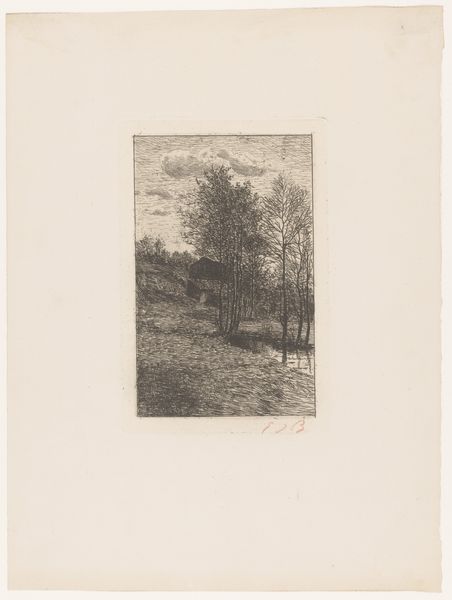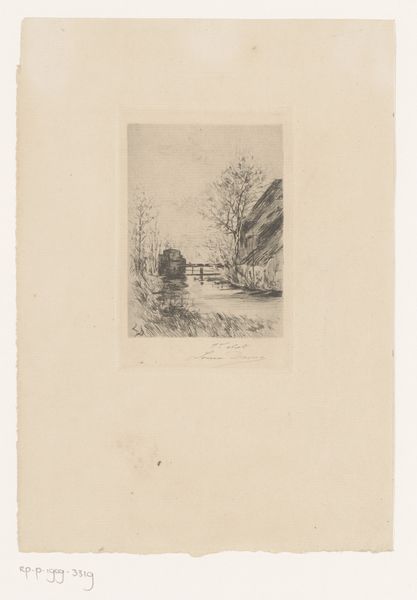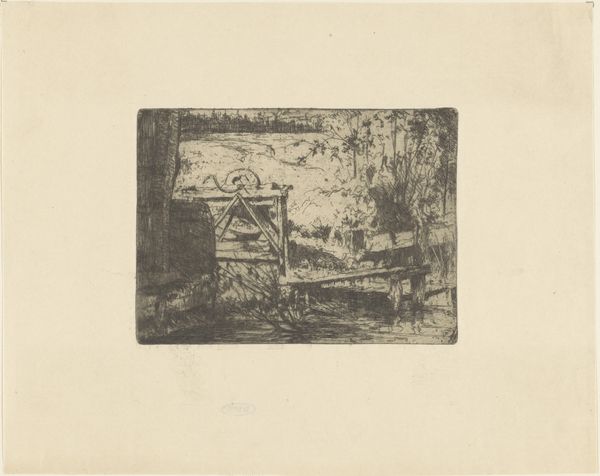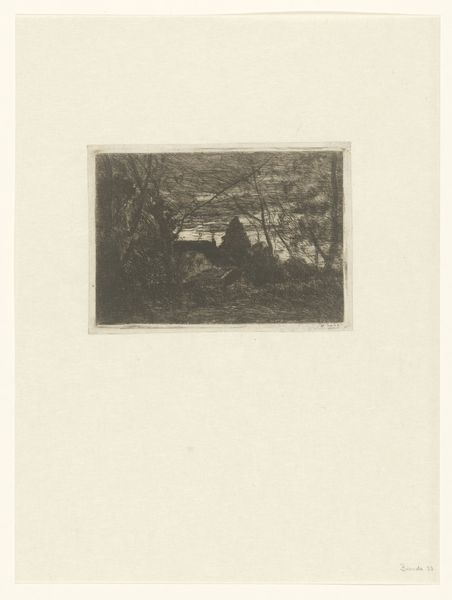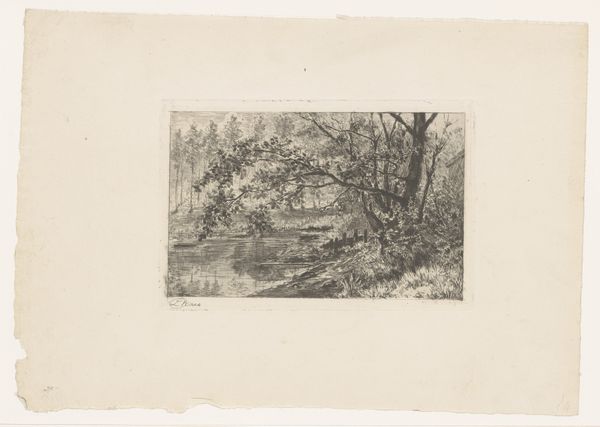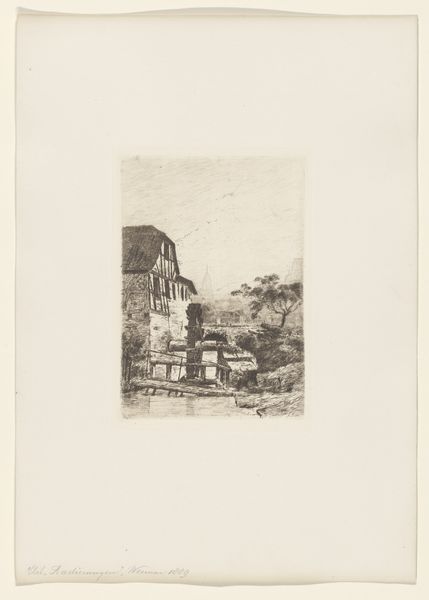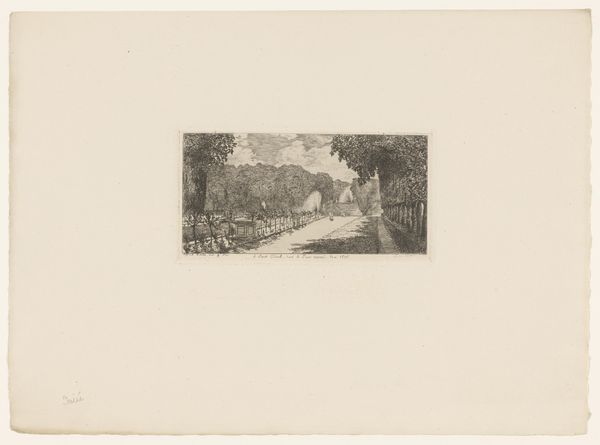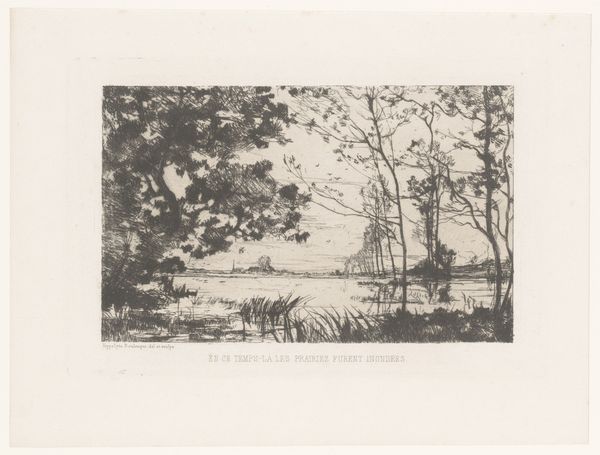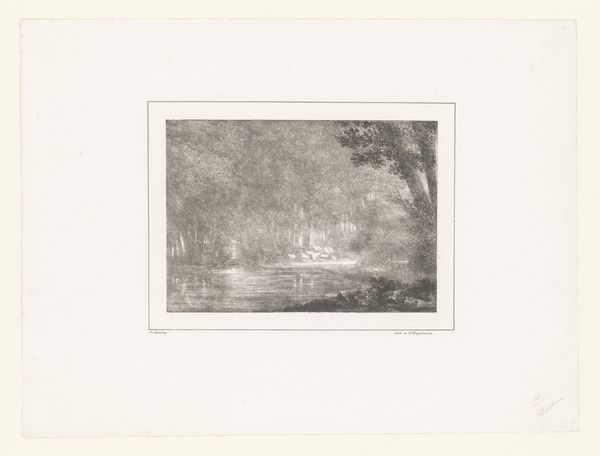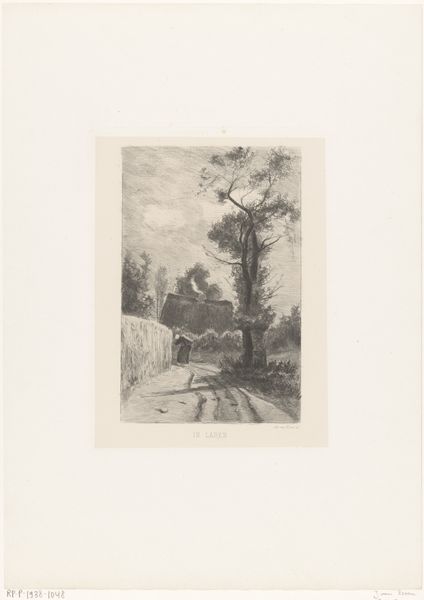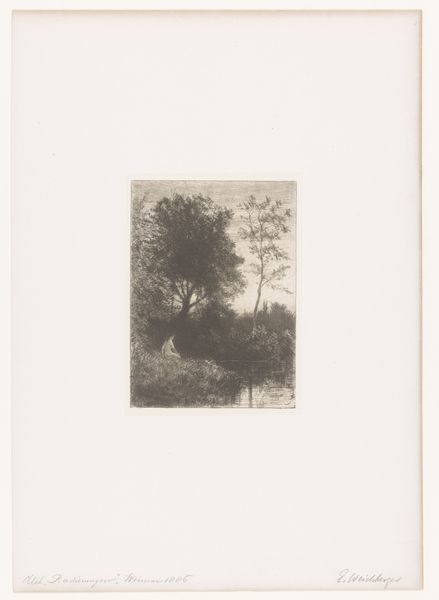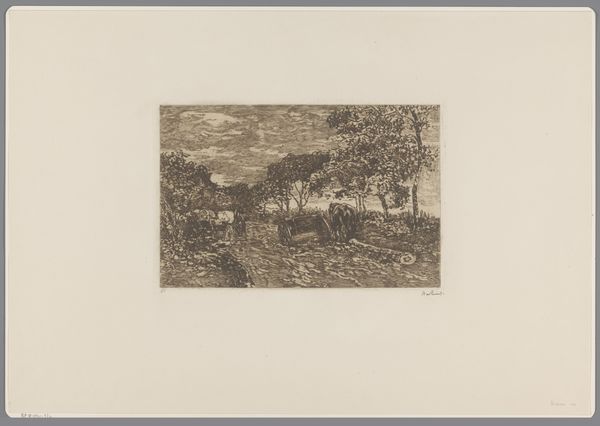
Loopplank aan de oever, daarachter twee zeilboten 1870 - 1914
0:00
0:00
Dimensions: height 79 mm, width 119 mm
Copyright: Rijks Museum: Open Domain
Willem Bastiaan Tholen created this etching, "Loopplank aan de oever, daarachter twee zeilboten," using metal, acid, and ink. The etching process allows for detailed and repeatable imagery, a technique that democratized image production. Look closely, and you'll notice the fine lines which define the composition. These lines were incised into a metal plate, likely copper or zinc. Tholen would have coated the plate with a waxy, acid-resistant ground. Using a sharp needle, he then drew his design, exposing the metal. The plate was then immersed in acid, which bit into the exposed lines, creating grooves. Ink was applied to the plate, filling the grooves, and the surface was wiped clean. Finally, the plate and paper were pressed together, transferring the ink and creating the print. This printmaking technique, with its reliance on skilled labor and industrial materials, mirrors the broader shifts in society towards mass production and consumption. Etchings like this allowed for wider distribution of images, contributing to the growth of visual culture. By understanding the materials and processes behind this print, we gain insight into its cultural and economic context, bridging the gap between art and industry.
Comments
No comments
Be the first to comment and join the conversation on the ultimate creative platform.
